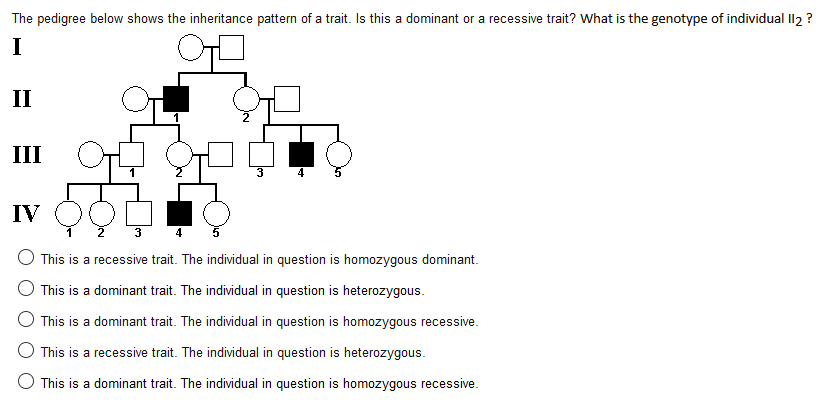

Finally, there is no expression of the trait from individuals with heterozygous alleles (Aa) but they happen to be carriers for it. People with homozygous dominant alleles (AA) will not carry the trait or express it. This means that only people who are characterized by the homozygous recessive alleles (aa) express the trait.

Furthermore, such recessive traits require two recessive alleles for the purpose of expression. Recessive traits, in contrast, are like having straight thumbs or cystic fibrosis. However, people with homozygous recessive alleles (aa) certainly do not express such traits. This means that people or organisms with homozygous dominant alleles (AA) and also the heterozygous alleles (Aa) express such traits. Moreover, such traits only require one dominant allele for the purpose of expression. Dominant and Recessive Inheritanceįor this type of inheritance, one must look at alleles using letters where a capital letter shows a dominant allele, and a lowercase letter is representative of a recessive allele: AA, Aa, and aa.Įxamples of dominant traits can be like the ability to roll the tongue or have a genetic likelihood of developing Huntington’s disease. In contrast, if the alleles are different, then for that particular trait the person is heterozygous.

In case the alleles match, for that particular trait the person is homozygous. Similarly, they also possess copies of each gene and locus on such chromosomes.Īllele refers to each of these trait-encoding genes (or loci). Also, humans certainly have two copies of each chromosome. Furthermore, they also look at the locus where that trait or gene encodes on the chromosome. When we talk about genetic traits, experts look at genes. Meiosis is the process by which sperm and egg cells facilitate the splitting of chromosomal copies in order to become haploid.
#HOMOZYGOUS DOMINANT TRAITS FULL#
This causes the offspring to receive the full diploid complement. For the purpose of conservation of diploidy, the sperm and egg cells each contribute only one copy of each chromosome at the time of conception. What this means is that each cell contains two copies of each and every chromosome.

This article discusses the difference between homozygous and heterozygous in detail. When it comes to diploid organisms, heterozygous happens to be an organism that has two different alleles for a certain trait. This is because, in heterozygous inheritance, the genes come from two cells which are parent cells. The situation of heterozygous stands in contrast to that of homozygous. Homozygous means a particular r gene that has alleles of an identical nature on both the homologous chromosomes. The diploid organisms almost always have two alleles for a particular trait. Furthermore, alleles are known to exist in various different forms. Homozygous, simply speaking, means having identical alleles for a single trait. What is the Difference Between Homozygous and Heterozygous? Most noteworthy, students will understand the difference between homozygous and heterozygous here. Students can learn more about homozygous and heterozygous here. Understanding the difference between homozygous and heterozygous is an important part of the study of DNA and genetics. The human DNA is a complex aspect of living organisms.


 0 kommentar(er)
0 kommentar(er)
